CCHCR1-astrin interaction promotes centriole duplication through recruitment of CEP72
- PMID: 36280838
- PMCID: PMC9590400
- DOI: 10.1186/s12915-022-01437-6
CCHCR1-astrin interaction promotes centriole duplication through recruitment of CEP72
Abstract
Background: The centrosome is one of the most important non-membranous organelles regulating microtubule organization and progression of cell mitosis. The coiled-coil alpha-helical rod protein 1 (CCHCR1, also known as HCR) gene is considered to be a psoriasis susceptibility gene, and the protein is suggested to be localized to the P-bodies and centrosomes in mammalian cells. However, the exact cellular function of HCR and its potential regulatory role in the centrosomes remain unexplored.
Results: We found that HCR interacts directly with astrin, a key factor in centrosome maturation and mitosis. Immunoprecipitation assays showed that the coiled-coil region present in the C-terminus of HCR and astrin respectively mediated the interaction between them. Astrin not only recruits HCR to the centrosome, but also protects HCR from ubiquitin-proteasome-mediated degradation. In addition, depletion of either HCR or astrin significantly reduced centrosome localization of CEP72 and subsequent MCPH proteins, including CEP152, CDK5RAP2, and CEP63. The absence of HCR also caused centriole duplication defects and mitotic errors, resulting in multipolar spindle formation, genomic instability, and DNA damage.
Conclusion: We conclude that HCR is localized and stabilized at the centrosome by directly binding to astrin. HCR are required for the centrosomal recruitment of MCPH proteins and centriolar duplication. Both HCR and astrin play key roles in keeping normal microtubule assembly and maintaining genomic stability.
Keywords: Astrin; CCHCR1; CEP72; Centrosome; Microtubule organization; Mitosis.
© 2022. The Author(s).
Conflict of interest statement
The authors declare that they have no competing interests.
Figures
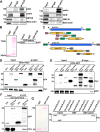
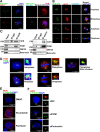
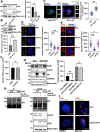
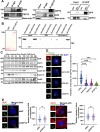
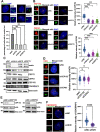
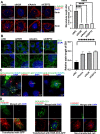
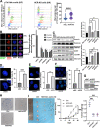

Similar articles
-
Centriolar satellites assemble centrosomal microcephaly proteins to recruit CDK2 and promote centriole duplication.Elife. 2015 Aug 22;4:e07519. doi: 10.7554/eLife.07519. Elife. 2015. PMID: 26297806 Free PMC article.
-
Astrin is required for the maintenance of sister chromatid cohesion and centrosome integrity.J Cell Biol. 2007 Jul 30;178(3):345-54. doi: 10.1083/jcb.200701163. J Cell Biol. 2007. PMID: 17664331 Free PMC article.
-
CCDC57 Cooperates with Microtubules and Microcephaly Protein CEP63 and Regulates Centriole Duplication and Mitotic Progression.Cell Rep. 2020 May 12;31(6):107630. doi: 10.1016/j.celrep.2020.107630. Cell Rep. 2020. PMID: 32402286
-
Centrosomes and the art of mitotic spindle maintenance.Int Rev Cell Mol Biol. 2014;313:179-217. doi: 10.1016/B978-0-12-800177-6.00006-2. Int Rev Cell Mol Biol. 2014. PMID: 25376493 Review.
-
Astrin: A Key Player in Mitosis and Cancer.Front Cell Dev Biol. 2020 Aug 28;8:866. doi: 10.3389/fcell.2020.00866. eCollection 2020. Front Cell Dev Biol. 2020. PMID: 32984344 Free PMC article. Review.
Cited by
-
Segregation of nascent GPCRs in the ER-to-Golgi transport by CCHCR1 via direct interaction.J Cell Sci. 2024 Feb 1;137(3):jcs261685. doi: 10.1242/jcs.261685. Epub 2024 Feb 8. J Cell Sci. 2024. PMID: 38230433 Free PMC article.
-
Cell cycle regulation of the psoriasis associated gene CCHCR1 by transcription factor E2F1.PLoS One. 2023 Dec 21;18(12):e0294661. doi: 10.1371/journal.pone.0294661. eCollection 2023. PLoS One. 2023. PMID: 38128007 Free PMC article.
References
-
- Desai A, Mitchison TJ. Microtubule polymerization dynamics. Annu Rev Cell Dev Biol. 1997;13:83–117. - PubMed
-
- Hixon ML, Gualberto A. The control of mitosis. Front Biosci. 2000;5:D50–D57. - PubMed
-
- Musacchio A, Hardwick KG. The spindle checkpoint: structural insights into dynamic signalling. Nat Rev Mol Cell Biol. 2002;3:731–741. - PubMed
-
- Nunes V, Ferreira JG. From the cytoskeleton to the nucleus: an integrated view on early spindle assembly. Semin Cell Dev Biol. 2021. 10.1016/j.semcdb.2021.03.006. - PubMed
Publication types
MeSH terms
Substances
LinkOut - more resources
Full Text Sources
Research Materials

